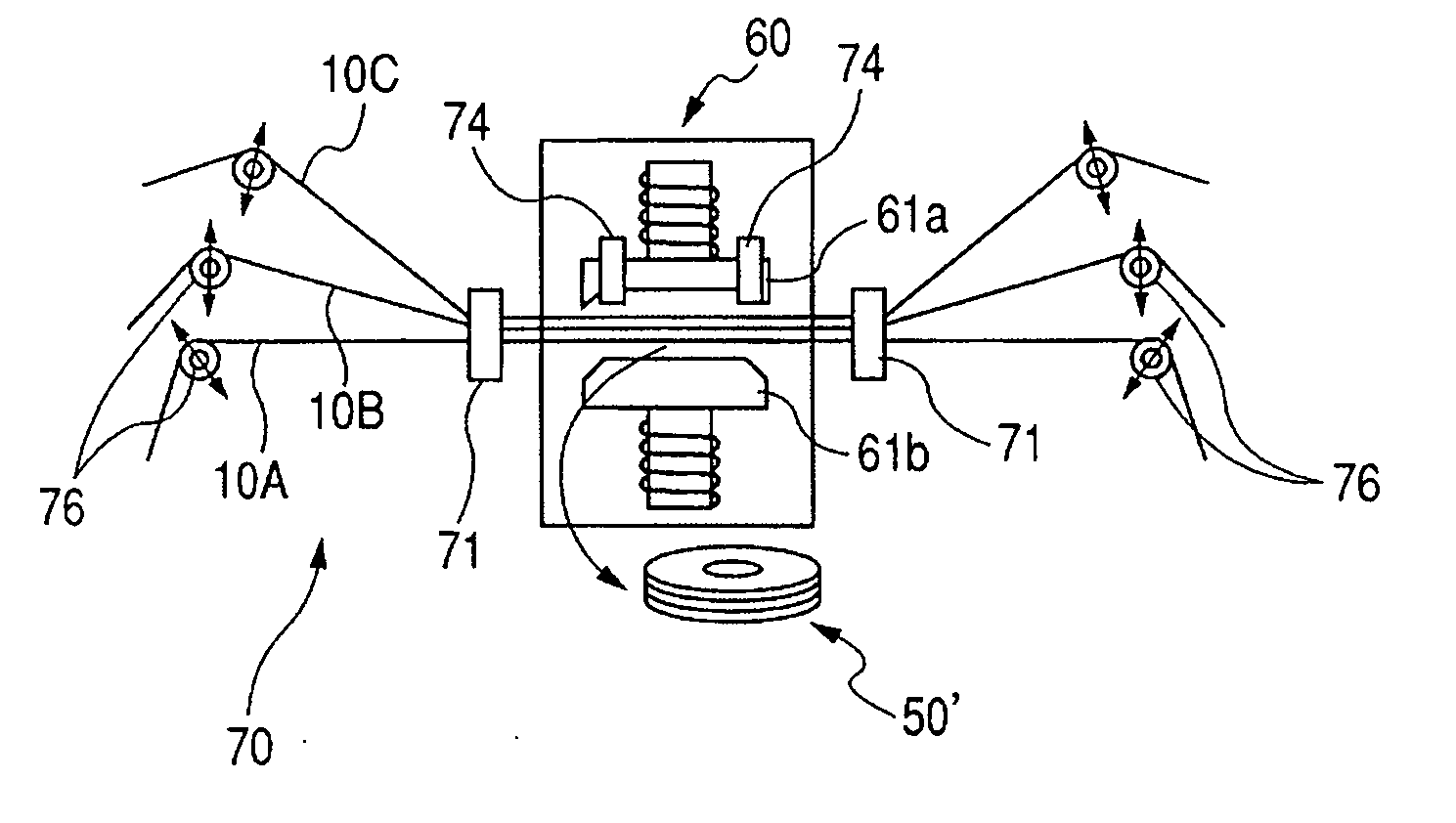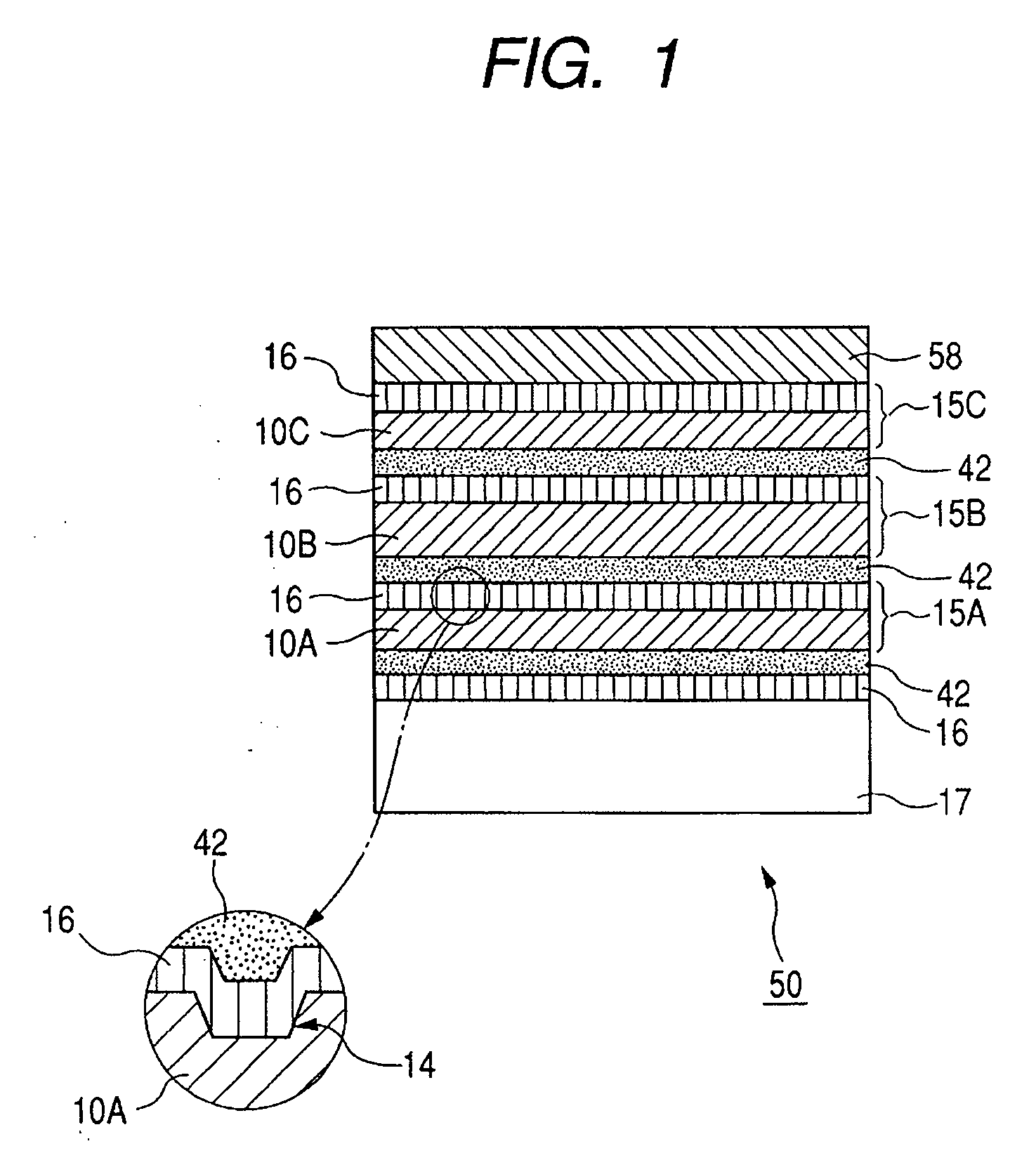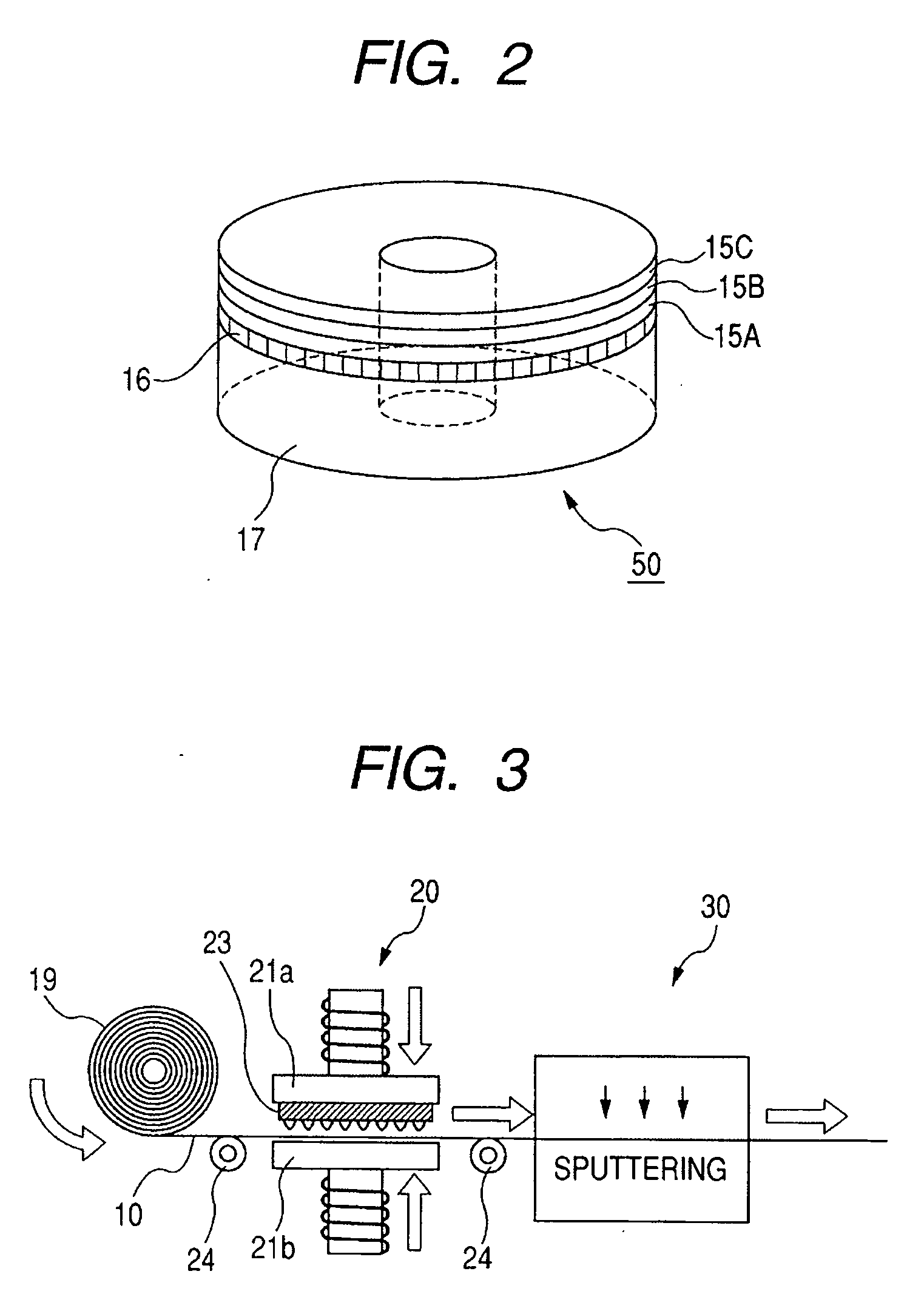Optical recording medium and manufacturing method thereof
- Summary
- Abstract
- Description
- Claims
- Application Information
AI Technical Summary
Benefits of technology
Problems solved by technology
Method used
Image
Examples
example 1
[0093] Hereinafter, a specific example of the present invention will be described with reference to FIGS. 1, 2, 3, 4A to 4C, 5, 6, and 7A to 7E.
[0094] As the sheet-like substrates 10A, 10B, and 10C made of polycarbonate, those having thicknesses of 12 μm, 13 μm, and 14 μm, respectively, were prepared. A protective sheet with a thickness of 100 μm was laminated on one surface of each sheet-like substrate as a backing member.
[0095] The glass transition point of polycarbonate resin was 140° C., and the thermal deformation temperature thereof was about 120° C. Further, the temperature of the sheet-like substrates immediately after the transcription by the stamper 23 of the forming apparatus 20 was 30° C. to 40° C.
[0096] In the film-forming apparatus 30, a SiN film (reflective layer) was formed as the recording layer 16 by sputtering, and the thickness thereof was 10 nm. In the process of sputtering, a mask was used so that the alignment marks 13 were not formed.
[0097] The transmitta...
example 2
[0133] Next, the step of providing the protective layer 58 on the laminated recording medium 55 in which the laminate 50′ and the support substrate 17 are bonded together will be described in detail.
[0134]FIGS. 11A to 11D schematically show the process of forming a protective layer in the case of using a sheet 100 for forming a protective layer in a method of manufacturing an optical recording medium according to the present invention.
[0135] First, the laminated recording medium 55 was held on the holding tool 111. The protecting sheet 100 was placed in vacuum on the recording layer side of the held laminated recording medium 55 so as not to involve air and a foreign matter between the laminated recording medium 55 and the protecting sheet 100. As the protecting sheet is made of thermoplastic resin, a sheet with a thickness of 75 μm was used. A center hole was provided in the used protecting sheet, and the inner / outer diameters thereof completely covered the recording layer in an ...
example 3
[0140] Further, a four-layered optical recording medium was produced by a procedure of forming the protective layer 58 by immersing in resin. The formation of the protective layer will be described below in detail.
[0141]FIG. 12A to 12E schematically show the process of forming a protective layer by immersing in resin, in the method of manufacturing an optical recording medium according to the present invention.
[0142] The laminated recording medium 55 was held on the holding tool 122 (see FIG. 12A).
[0143] The held laminated recording medium 55 was allowed to pass through the tank 123 filled with the resin for a protective layer 120 while the held laminated recording medium 55 was being rotated. UV-curable resin (INC-118, produced by Nippon Kayaku Co., Ltd.) was used as the resin for a protective layer, and the rotation number during immersing was set to be 60 rpm, and the immersing time was set to be 2.0 seconds. Further, as shown in FIG. 12B, only a region from a radius of 8.0 mm...
PUM
| Property | Measurement | Unit |
|---|---|---|
| Shape | aaaaa | aaaaa |
Abstract
Description
Claims
Application Information
 Login to View More
Login to View More - R&D
- Intellectual Property
- Life Sciences
- Materials
- Tech Scout
- Unparalleled Data Quality
- Higher Quality Content
- 60% Fewer Hallucinations
Browse by: Latest US Patents, China's latest patents, Technical Efficacy Thesaurus, Application Domain, Technology Topic, Popular Technical Reports.
© 2025 PatSnap. All rights reserved.Legal|Privacy policy|Modern Slavery Act Transparency Statement|Sitemap|About US| Contact US: help@patsnap.com



